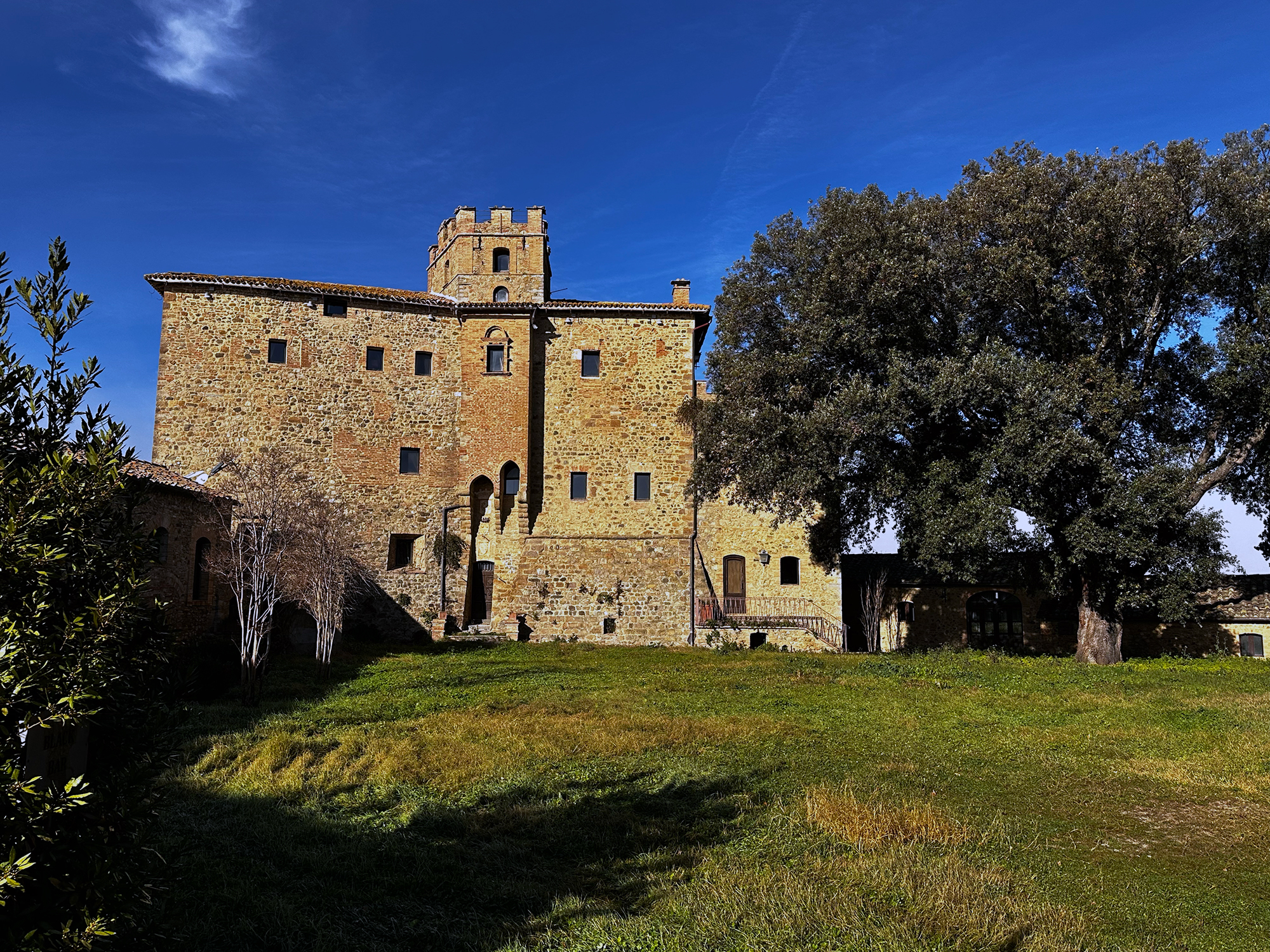
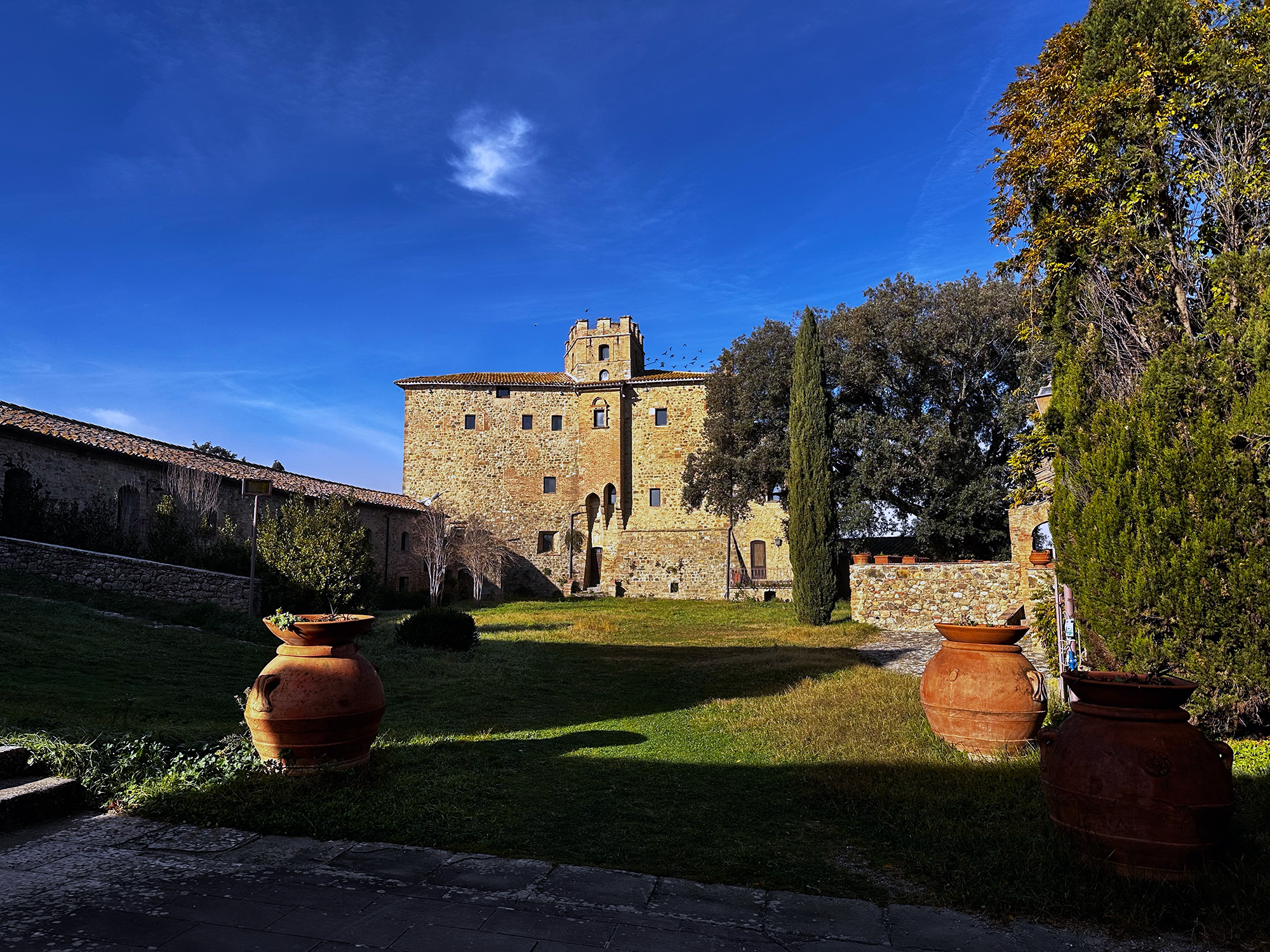
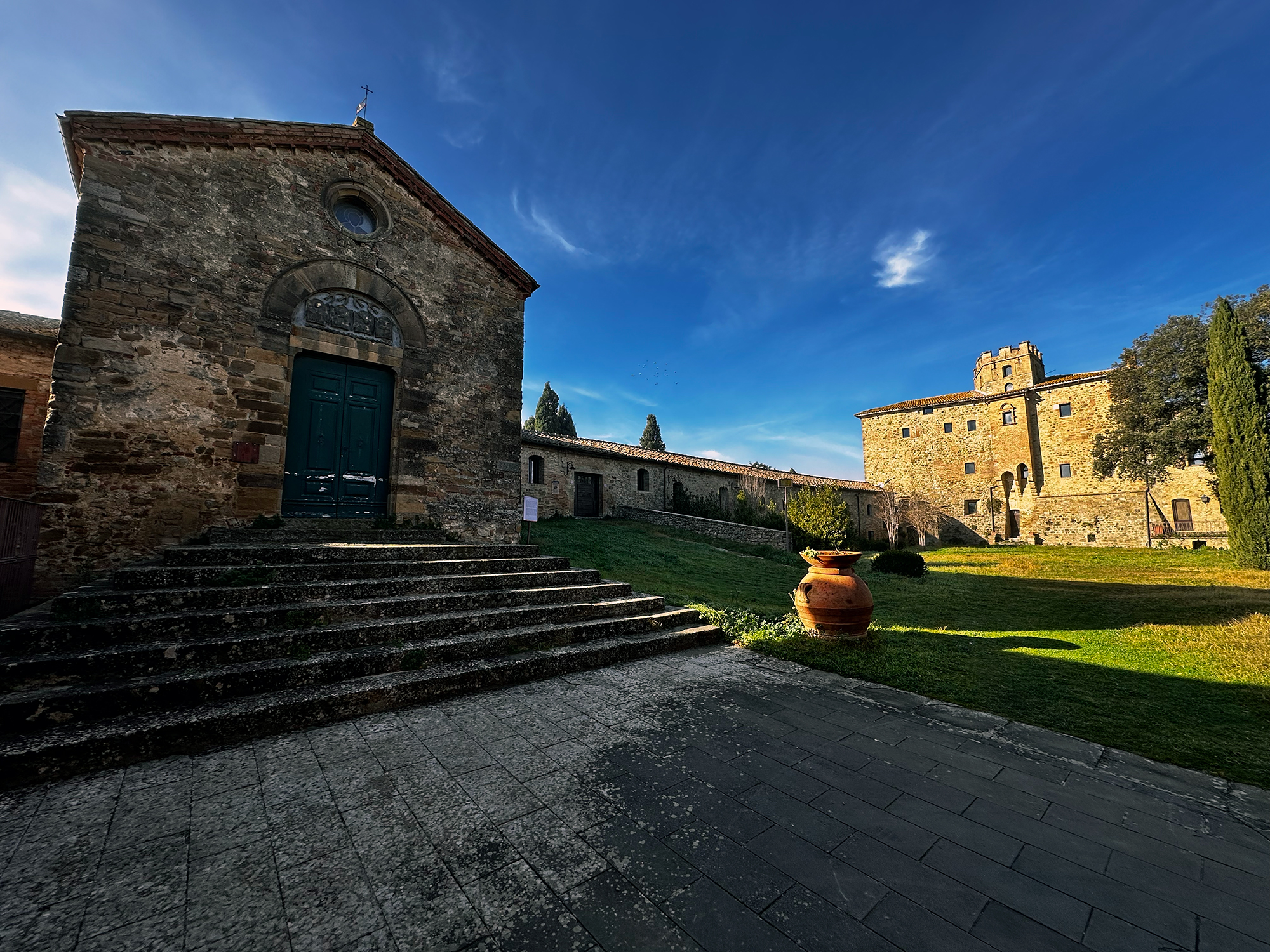
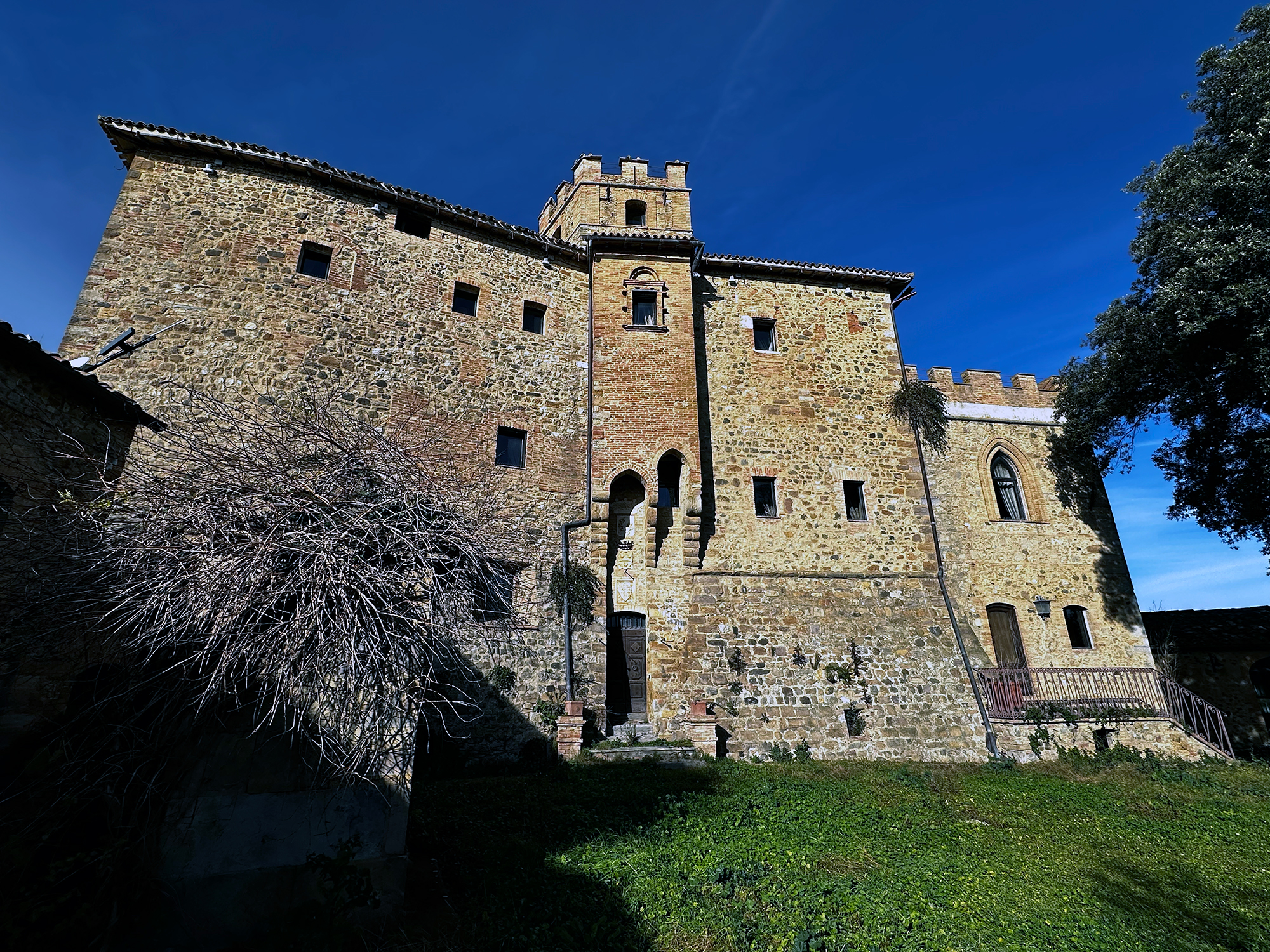
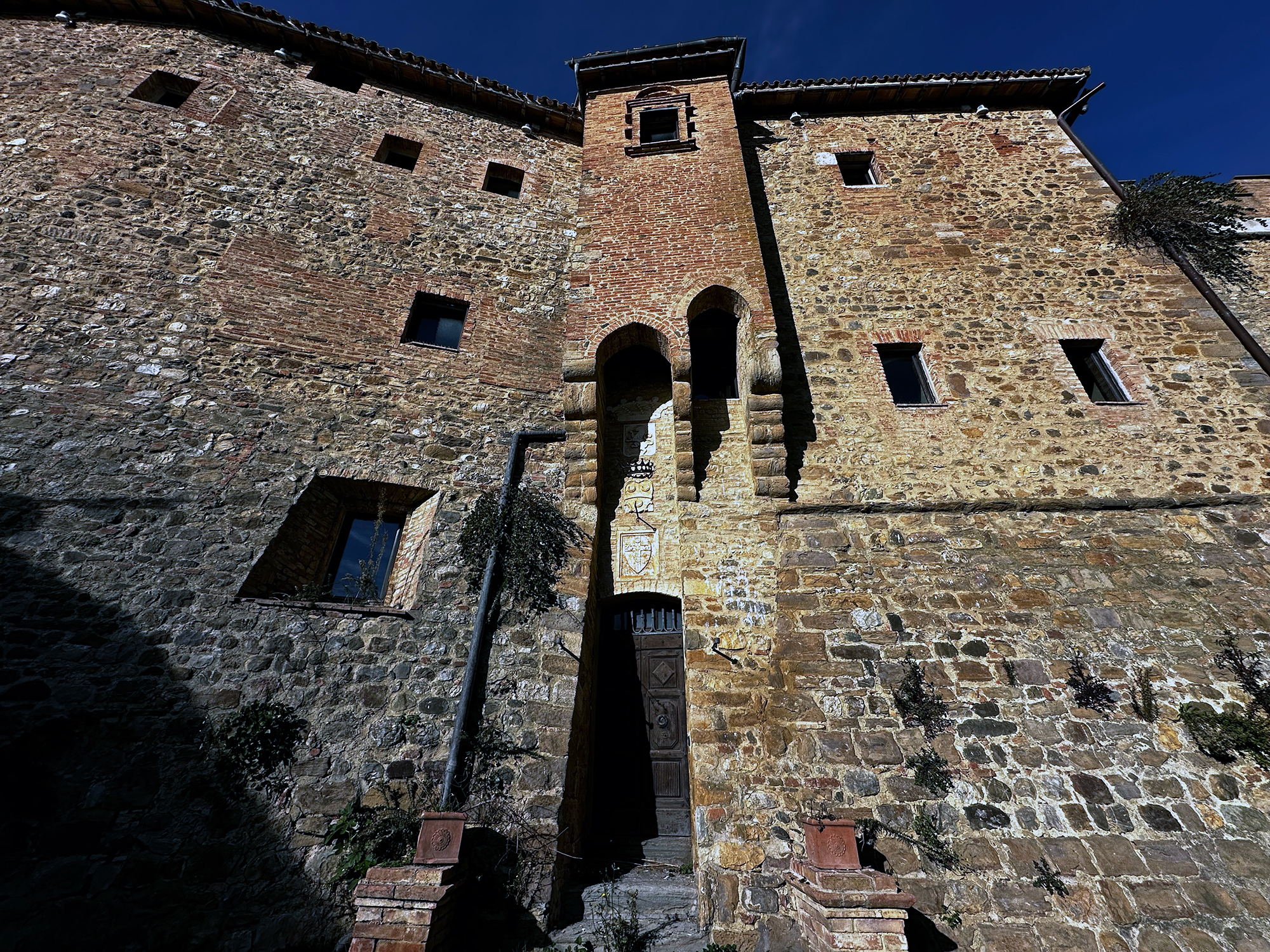
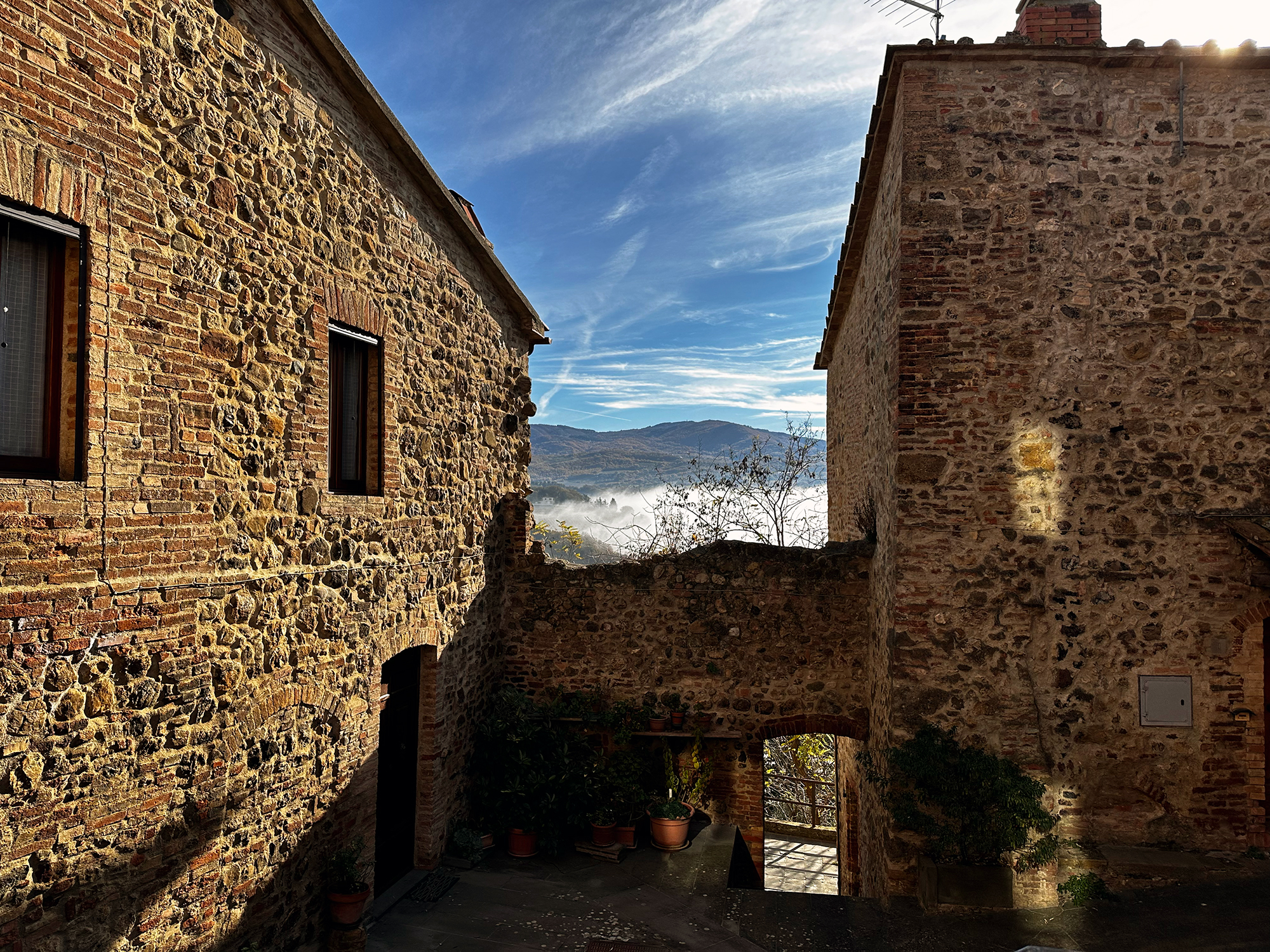
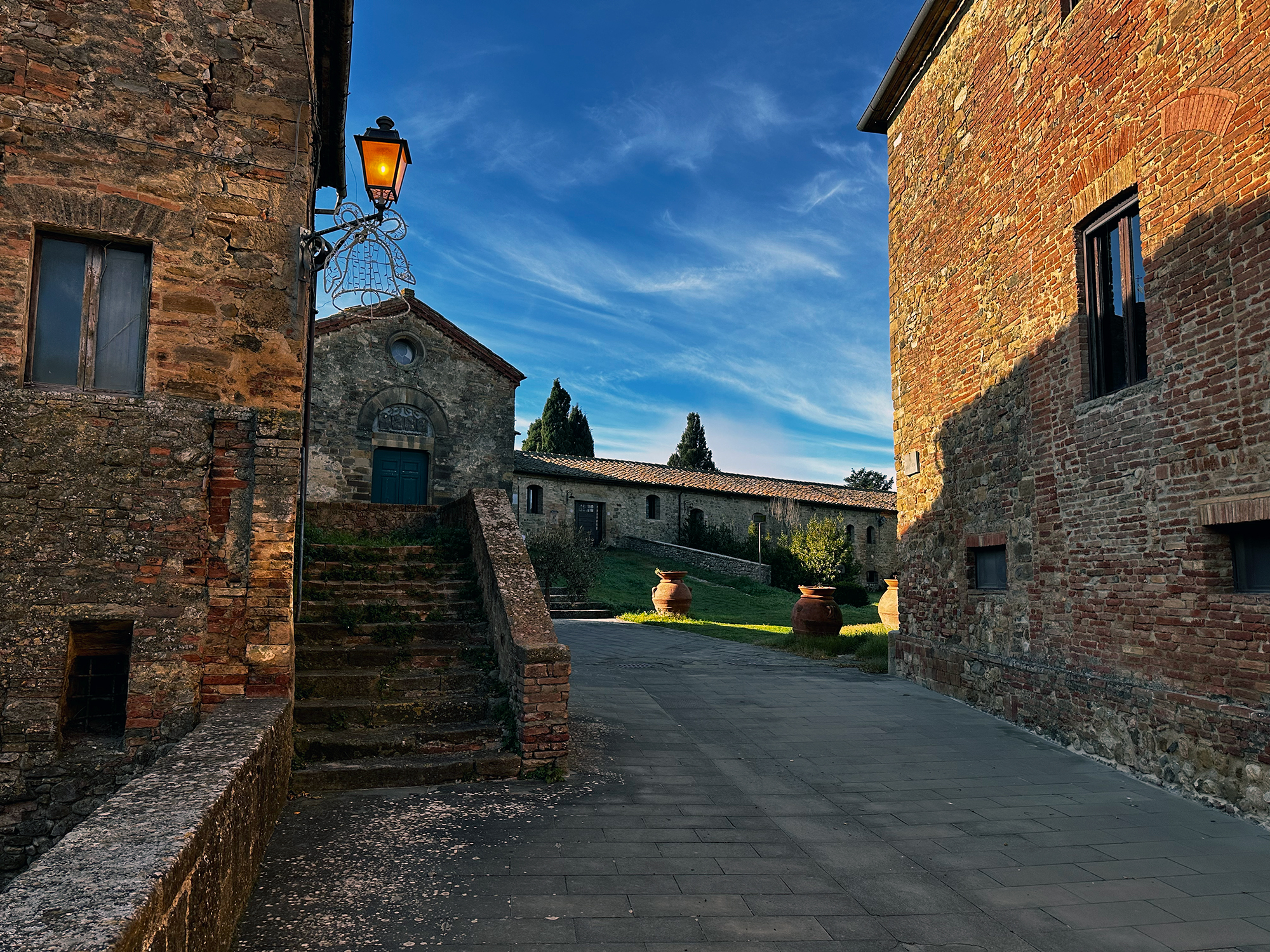
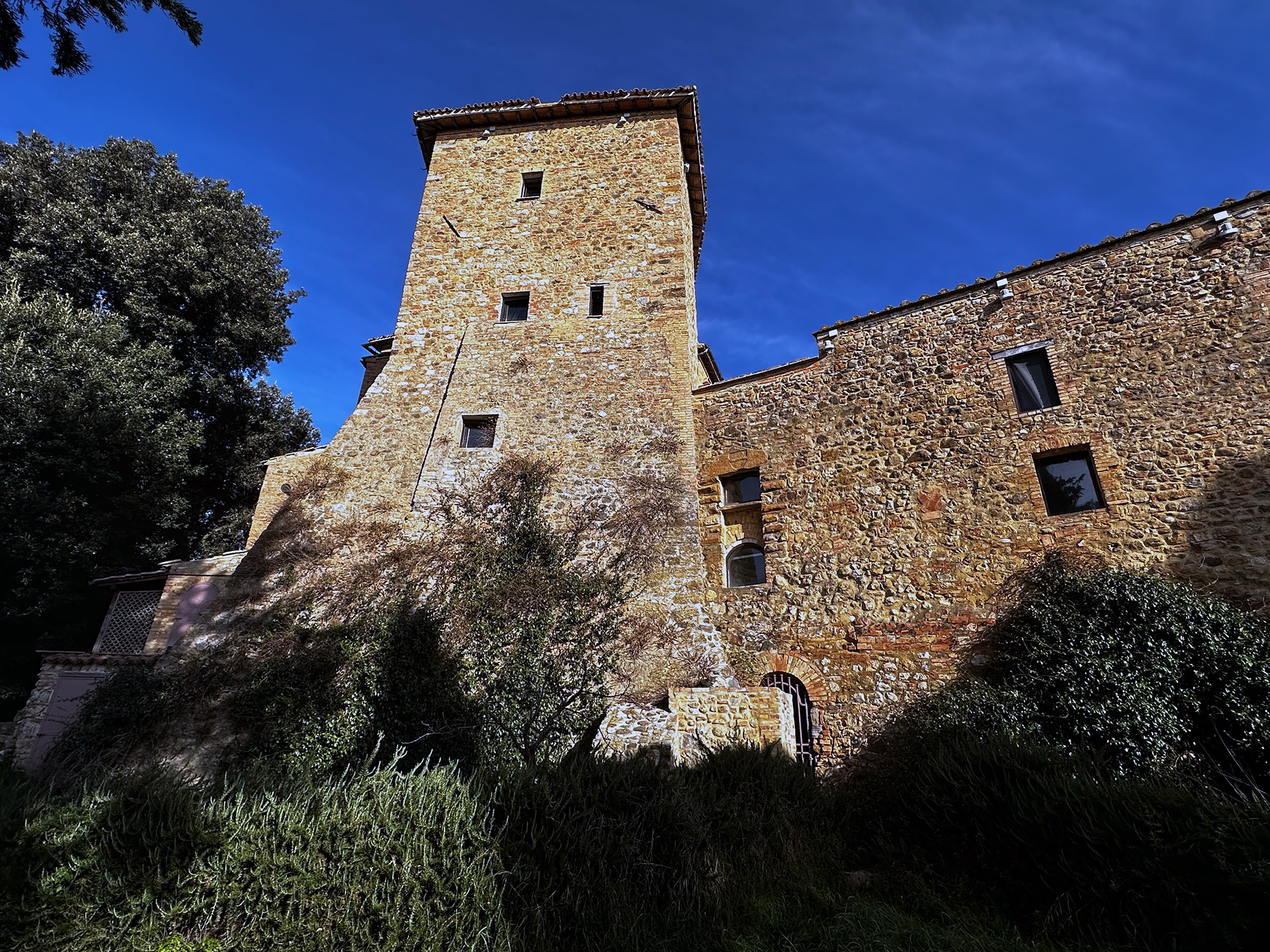

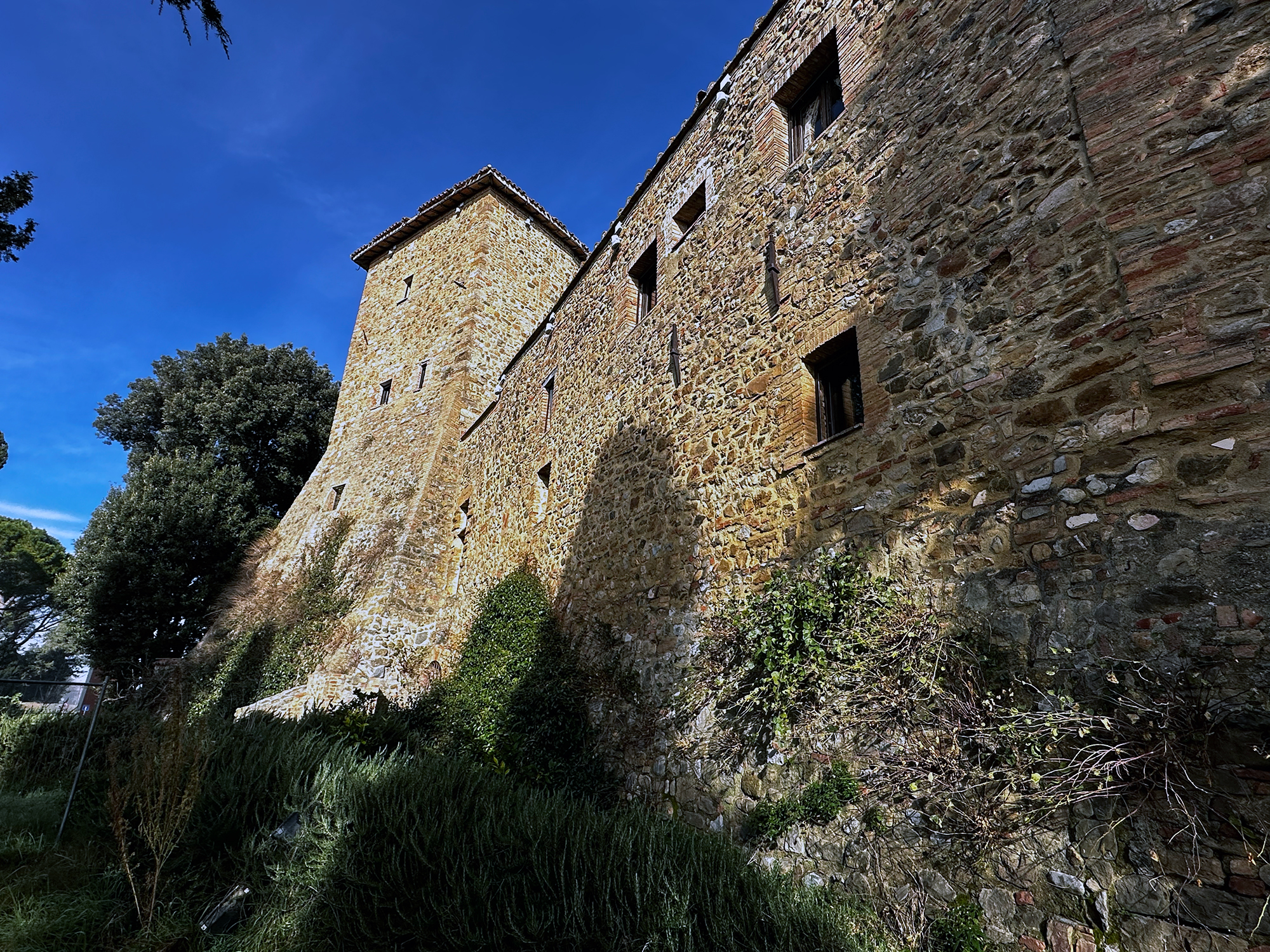
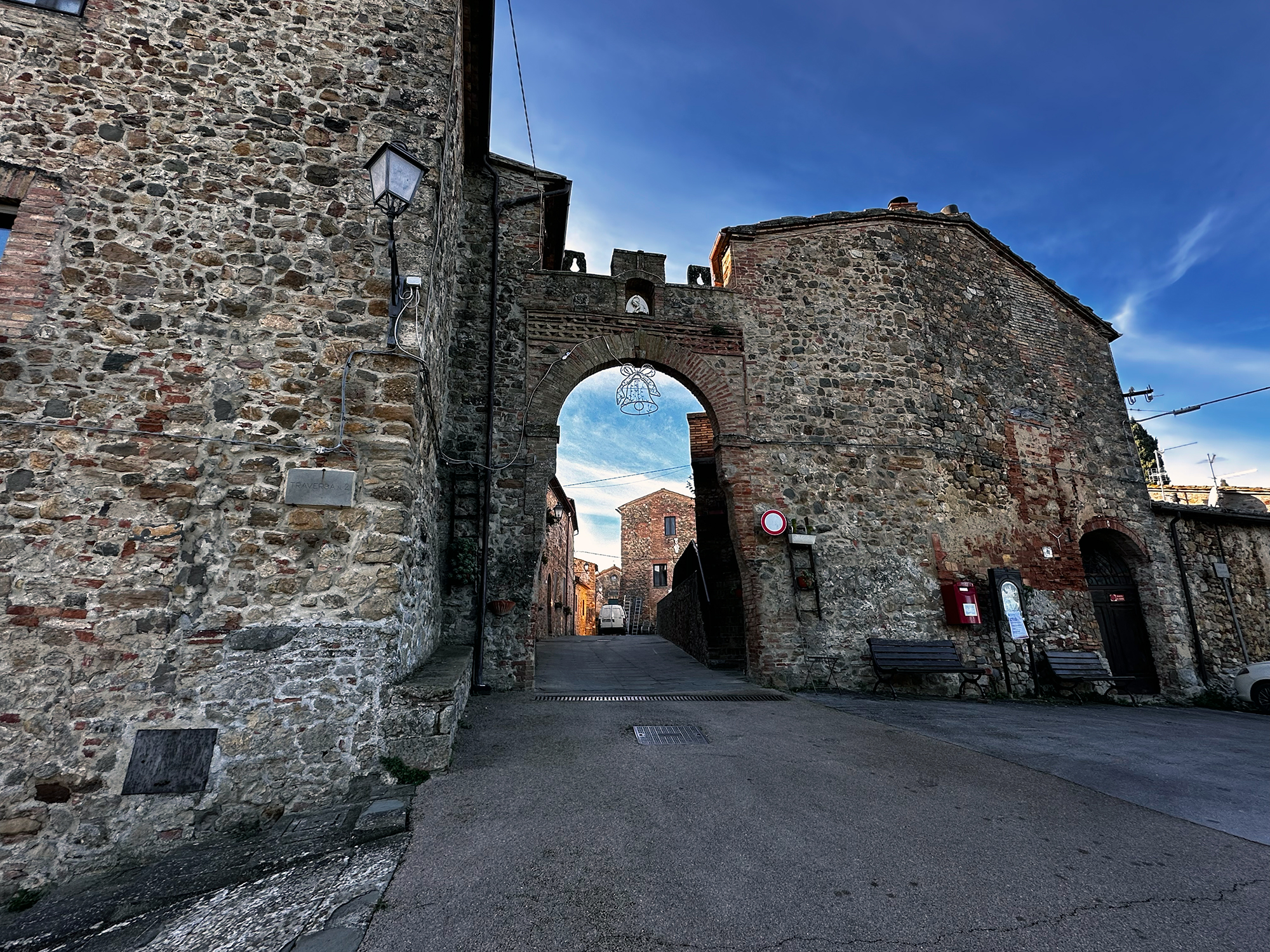











How to reach
Porrona is located approximately 3 km from Cinigiano, between the Ombrone Valley and Mount Amiata, on a small tuff hill at an altitude of 254 meters. It is easily accessible by following the SP64 'del Cipressino' road to the junction with the Provincial Road of Porrona.
History
Archaeological findings indicate that the area was already inhabited during the Etruscan era. Additionally, historical sources and material remains suggest that the site suffered Saracen raids in the 10th century CE, similar to the nearby town of Roselle.
The medieval fortified structure was built by the Sienese between the 12th and 13th centuries to defend and consolidate control over the territory. In 1377, the village was devastated by Gascon and Breton militias. During the 15th century, ownership of the village passed to the Tolomei family, who shared control with the Piccolomini family until the 19th century.
The defensive walls, forming a rhomboid-shaped perimeter, were entirely built in stone with brick inserts. Largely, they coincide with the outer walls of the buildings that make up the historic center. The main access to the village is through the "Porta Senese," located on the northeastern side.
The "Porta Senese," dating back to the 13th century, stands out for its brick arch structure, with bricks laid at an angle of approximately 45° in three alternating rows. The arch culminates in a central niche made of the same material. A significant restoration effort, completed in 2014 by the Municipal Administration of Cinigiano, enabled the recovery of the gate and substantial portions of the walls.
The Cassero, also known as Palazzo Tolomei, incorporates the ancient fortified fortress. Located in the western part of the village, its external walls align with the western corner of the defensive walls.
Built by the Sienese in the early 13th century, it was almost entirely rebuilt during the Renaissance, at the beginning of the 16th century. Later, in the 20th century, the complex underwent a neo-Gothic restoration aimed at recovering medieval elements.
The main façade, facing the square, is characterized by a slightly protruding tower resting on three corbels. The tower rises above the roof level, featuring a crenellated top and single-lancet windows with pointed arches. On the right side of the main building is a secondary structure of lower height, also crowned with battlements. Above the entrance to the palace, the coats of arms of the Piccolomini-Todeschini and Tolomei families are visible, testifying to their influence over the village.
In the square in front of the palace stands the "Casa Grande," a palace belonging to the Piccolomini family, built in the 16th century. Above the entrance portal is the family’s coat of arms accompanied by the inscription: “Franciscus Piccolomineus Cardinalis Senensis. MCDXCVI”, commemorating Cardinal Francesco Piccolomini, the future Pope Pius III.
The Church of San Donato, located on the opposite side of the square, has late Romanesque origins but underwent numerous transformations that altered its original architecture. The façade features a sober and linear arched portal made of sandstone blocks. The apse is incorporated into one of the towers of the defensive walls.